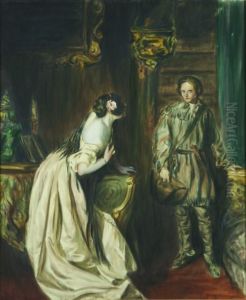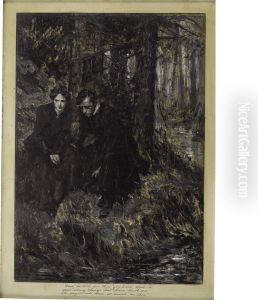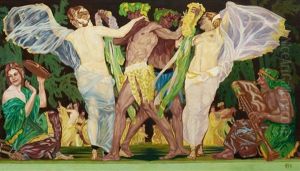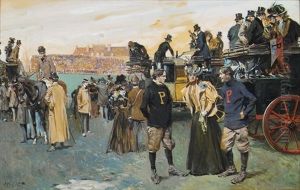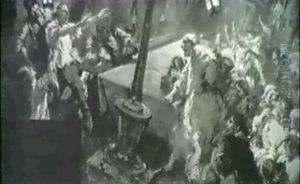Arthur Ignatius Keller Paintings
Arthur Ignatius Keller was an American illustrator known for his elegant drawings and his work in popular magazines during the late 19th and early 20th centuries. Born on July 4, 1866, in New York City, Keller demonstrated a keen interest in art from a young age. He pursued his passion by studying at the National Academy of Design in New York and later at the Royal Academy in Munich, Germany. His European studies significantly influenced his style, which combined the precision of academic art with a more fluid, narrative approach.
Keller's career as an illustrator gained momentum after he returned to the United States. He became a sought-after artist in the publishing industry, providing illustrations for books and magazines. His work appeared in many prominent publications of the time, including Harper's, Scribner's Magazine, and Century Magazine. Keller was particularly adept at creating illustrations for literary works, and he collaborated with notable authors of his time, such as Henry James and Edith Wharton.
One of Keller's most significant contributions to illustration was his ability to capture the essence of a story in a single image, often enhancing the reader's experience of the narrative. His illustrations were known for their detail, character portrayal, and emotional depth. Beyond magazines and books, Keller also produced illustrations for advertising and commercial products, showcasing his versatility as an artist.
Despite his success, Keller's life was not without challenges. He faced personal and health issues that sometimes affected his work. Nevertheless, he remained a prolific artist throughout his career. Arthur Ignatius Keller's legacy is preserved in the collections of various institutions, and his illustrations continue to be admired for their beauty and storytelling ability. He passed away on December 17, 1924, leaving behind a rich body of work that continues to influence illustrators and resonate with art enthusiasts.
